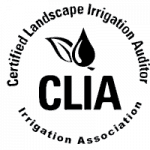Drip irrigation is an effective way to water your garden. It uses a series of small tubes that run along the ground to deliver water directly to plants. The system is simple to install and requires minimal maintenance.
There are several benefits to using drip irrigation. First, it conserves water because it delivers water only where it’s needed. Second, it reduces evaporation because the water runs slowly. Third, it helps prevent soil erosion. Finally, it allows you to use less fertilizer.
What is Drip Irrigation?
The basic concept behind drip irrigation is very simple. Water flows from one tube into another through holes in the bottom of each pipe. As the water moves down the line, it drips out at intervals onto the surface below. This method works well for watering large areas such as lawns or gardens. However, if you want to irrigate smaller spaces like flower beds or vegetable patches, then this type of setup may not be suitable. In these cases, you’ll need something more specific.
How Does A Drip System Work?
A typical drip irrigation system consists of three main components: emitters, risers, and tubing. Emitters send water from reservoirs to the riser lines. Risers connect the emitter to the tubing. The tubing then connects each individual tube to the desired location in the yard.
Emitters
An emitter sends water down one end of a pipe called a riser. At the other end of the riser, another piece of piping branches off. That branch leads to a tee fitting at which point the water splits into multiple paths. Each path has a different purpose. Some go straight to the ground while others lead to valves for controlling flow rates.
Risers
Risers act as conduits for delivering water from the emitter to the various locations throughout the yard. There are two basic kinds of risers: plastic and metal. Plastic risers are inexpensive and durable. However, they may not be able to withstand high temperatures. Metal risers are stronger and can handle higher operating pressures.
Tubing
The final component of a drip irrigation system is the tubing. Tubing usually comes in either rigid or flexible. Rigid tubing is more expensive but lasts longer. Flexible tubing is cheaper but wears out faster. You’ll want to choose between them based on how long you expect your system to last.
Types Of Drip Irrigators
You can choose between two types of drip systems: gravity-fed and pressure-driven. Gravity-fed systems rely on natural forces to move the water around. They’re usually cheaper than their pressure-based counterparts but they require some work to set up correctly. Pressure-driven systems have motors that force the water through the pipes. These tend to cost more initially but they last longer and don’t require any special skills to maintain them. You also get better control over how much water goes where with a motorized system.
Drip Irrigation and Water Conservation
One of the biggest advantages of drip irrigation is its ability to conserve water. Because there aren’t many moving parts involved, it doesn’t waste energy by pumping water uphill. Instead, all the power comes from the sun. When you consider that most people spend about half their time indoors, this means that drip irrigation saves a lot of money every year.
Another benefit of drip irrigation is that it prevents runoff. Runoff occurs when rainwater seeps into the earth and carries dirt particles away with it. If left untreated, this could cause serious damage to nearby ecosystems. With drip irrigation, however, the water stays close to the plant roots so it won’t carry off any sediment.
Finally, drip irrigation makes it easier to apply fertilizers. Most commercial fertilizers contain chemicals designed to dissolve quickly in water. But if you add too much fertilizer to a puddle, it will wash away before the nutrients reach the root zone. By contrast, drip irrigation lets you spread liquid fertilizer evenly across the entire area.
Drip Irrigation and Desert Landscaping
Desert landscapers often face problems similar to those faced by farmers who live near rivers or lakes. Rainfall tends to come in short bursts rather than steady streams. This causes flooding during heavy rains and dry conditions during periods without precipitation. To combat this problem, desert landscapers sometimes resort to sprinkler systems. While these do help reduce runoff, they still leave pools of standing water after storms.
With drip irrigation, you never have to worry about running out of water. All you have to do is turn on the tap whenever you need to refill the reservoir. Since the water always remains within easy reach, you can keep your landscape looking beautiful even under extreme weather conditions.
Drip irrigation is a smart way to save water and money. If you’re looking to install a new irrigation system, contact us at Water Wise Landscape today! We can help you find the right system for your landscape. Call us today to schedule an appointment and get your free estimate!






